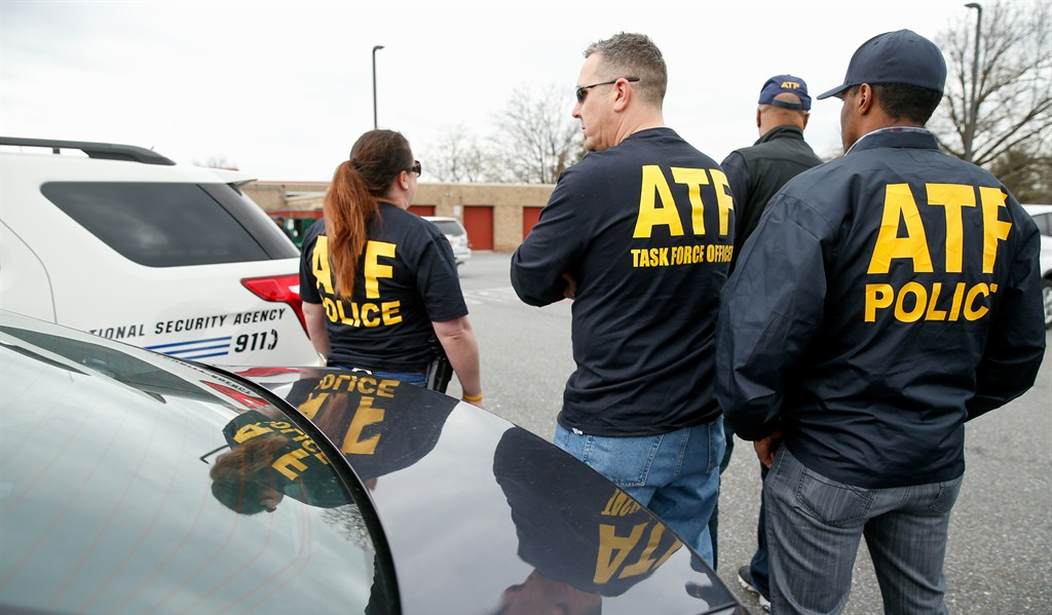One of the biggest concerns for gun owners with the current administration is that Joe Biden will try to use the regulatory powers of the executive branch to impose new restrictions on the right to keep and bear arms since he can’t get his gun ban plan through Congress. We’re already witnessing the a couple of attempts to do so with the proposed rules regarding unfinished frames and receivers and pistol braces that are still open for public comment, but a new lawsuit filed by Rare Breed Triggers is another example of how the agency can abuse its regulatory authority and cause big problems for companies that are trying to do the right thing.
As detailed in the federal lawsuit filed in Orlando, Florida, the company had four different former ATF agents take a look at their FRT-15 trigger to make sure it complied with ATF regulations and every one of them concluded that the trigger did not meet the ATF’s definition of a “machine gun.”
These four experts, with over 100 years of combined law enforcement experience, are well known to the Defendants. This is not only because of their former employment as ATF special agents, but also because the DOJ and ATF presented each of them as experts in the Defendants’ cases and criminal prosecutions on the subject of what does and does not constitute a “machinegun” under federal law.
In reliance upon the opinions of the Plaintiffs’ legal counsel and the opinions of these well-qualified industry experts and former ATF agents, RBT proceeded to sell the FRT-15.
On or about July 26, 2021, the DOJ, acting thorough the ATF, called the Plaintiffs in for a meeting with SAC.
At that meeting, Rare Breed was told by the SAC that his chain of command at ATF had told him to issue a cease-and-desist letter because the agency had examined the FRT-15 and had come to the conclusion that it was, in fact, a machine gun under ATF regulations.
When the Plaintiffs asked to see the alleged “examination”, SAC admitted to the Plaintiffs that while he knew who would normally do such an examination, (TEC Branch), he did not have the examination and had never seen it. SAC’s legal counsel also confirmed she did not have it and had not seen it.
SAC then hand delivered the Cease and Desist Letter to the Plaintiffs (“Cease and Desist Letter”).
The Cease and Desist Letter bases all of its directives on this alleged “examination” which has never been provided to the Plaintiffs.
The Cease and Desist Letter does not reveal the method of testing or the examination applied by the ATF’s Tampa Field Division in order to reach the conclusion that the FRT-15 is a machinegun, and it provides no details as to its conclusion other than to say that the FRT-15 allows more than one round of ammunition to be expelled at a time.
Rare Breed disputes that the FRT-15 allows for more than one round of ammunition to be fired with one pull of the trigger. In fact, they lay out precisely how the FRT-15 trigger functions in the lawsuit.
With the bolt locked in the chamber, a round of ammunition in the chamber, and the firearm’s safety off, the cycle of operation begins when the shooter pulls the trigger and fires the round. As the round passes the gas port, most of the gas from the explosion of the round is vented through the gas tube and that force begins the process of sending the bolt carrier to the rear of the firearm.
When that process starts, the bolt then unlocks and the brass of the spent round is then extracted from the chamber and ejected from the firearm.
Like all AR-15 firearms, as the bolt carrier moves to the rear it cocks the hammer of the firearm. In the FRT-15’s patented design, as the bolt carrier cocks the hammer, the force of the cocking hammer also forces a reset on the trigger by pushing the shooter’s finger forward and making the trigger ready to function again upon a subsequent pulling of the trigger. This is referred to as a “forced reset” and it is this forced reset that makes the FRT-15 legal under the NFA because it requires the pulling of the trigger again by the shooter in order to expel another round, i.e., the trigger is forced to mechanically reset itself and must be pulled again before it can fire an another round.
Simultaneously, as the trigger is forced into its reset position, a locking bar, which is part of the trigger assembly, pivots into position and mechanically locks the trigger forward. This is what prevents the trigger from functioning again until the cycle of operation is complete.
Continuing through the cycle, the buffer spring behind the bolt carrier pushes the bolt carrier forward which is what feeds a new round of ammunition into the chamber from the magazine. That new round of ammunition is forced into the chamber as the bolt closes and locks into place.
It is only after the bolt locks into place inside the chamber and the locking bar is disengaged may the trigger be pulled/functioned again to fire another round of ammunition upon the shooter’s subsequent pull. Until the trigger is pulled again, the firearm will not and cannot fire. In fact, pulling the trigger to the rear with enough force to overcome the forced reset function will cause the firearm to cease operation.
Rare Breed acknowledges that their trigger may allow for faster firing, but says that the trigger does not allow for more than one round of ammunition to be fired with each trigger pull, which is required in order to meet the ATF’s definition of a “machine gun.”
Granted, we’re only hearing Rare Breed’s side of the story here, but it’s a pretty compelling case. They’ve got four former ATF agents, including the agency’s former Chief Firearms Technology Instructor and the former head of the Firearms Technology Branch, who say that the trigger doesn’t meet the ATF’s definition of a machine gun. The ATF, on the other hand, has an “examination” of the trigger that they haven’t shown the company.
Most importantly, the ATF has the power and the authority to shut Rare Breed Triggers down and to charge owner Kevin Maxwell with federal felonies if he continues to sell the trigger. That’s why he and the company are seeking an emergency injunction blocking the cease and desist letter from taking effect while they seek a permanent injunction, as well as a declaration by the court that the FRT-15 does not constitute a machine gun and that the ATF’s attempt to ban it is unlawful and unenforceable.
An emergency hearing will take place next week before U.S. District Judge Carlos Mendoza, an appointee of Barack Obama but someone who also should know the difference between a machine gun and a semi-automatic rifle given his experience in the Marine Corps during Operation Desert Shield and Operation Desert Storm. We’ll see what the ATF’s response to Rare Breed’s argument looks like in a couple of days, but at the moment I’d say the company has a pretty strong case as long as the judge doesn’t engage in any activism from the bench.








Join the conversation as a VIP Member